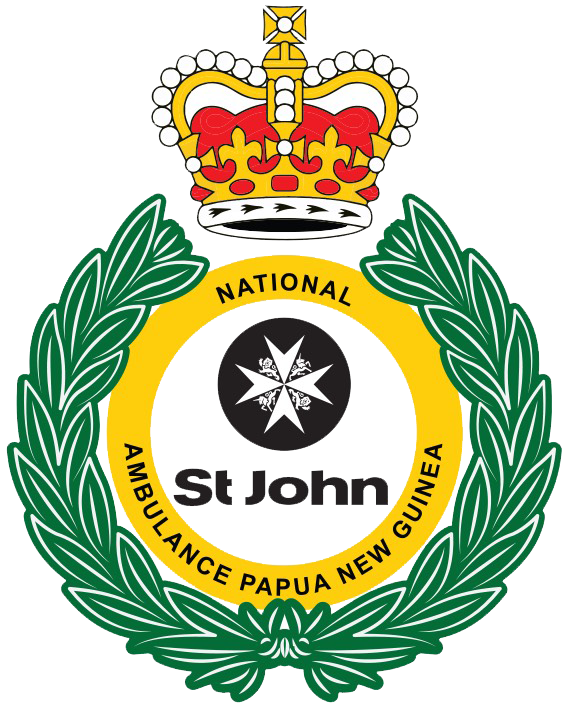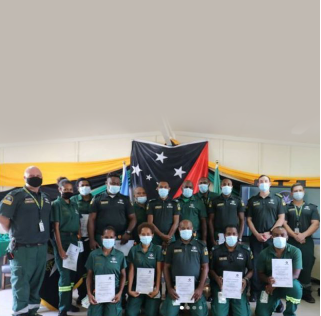Information for Trainee Ambulance Officers
St John takes year 12 graduates, puts them through an intensive 52-week training program to become a qualified ambulance officer.
The gruelling induction training will test the trainees’ resolve, resilience and ability to learn and operate in a high pressure environment.
Recruitment phases:
- Submission of CV and supporting documents
- English and mathematics testing
- Interview
- Medical assessment
- Vaccinations
- Commencement of training
- Fitness training and testing throughout
Training phase
Ambulance officer training takes place over a 52-week period.
The trainee is required to complete all phases of their training to progress to become a qualified ambulance officer. The trainee is only considered a permanent employee of St John once they have completed all training to qualify as an ambulance officer.
The training consists of three phases:
Phase one: Induction school –
Duration: 14 weeks
Location: Ambulance Service Training Academy (ASTA), Port Moresby.
Qualification: Certificate II Ambulance Practice
Course:
The 14- week induction course aims to teach you the fundamentals of being an ambulance officer, from how to wear your uniform, to using a radio, cleaning a stretcher, driving an ambulance, and applying basic life support and basic prehospital care.
- Classroom theory
- Practical training
- Assessments
- Weekly assignments
- End of course assessments and written examination
- Objective Structured Clinical Exams (OSCE)
- Physical training and assessments
- Exercise Maltese Cross
Phase two – on-road field training
Once you complete induction school, you will be sent out on road to work under the direction of an ambulance field training officer (AFTO). The AFTO is responsible for supervising your practice, developing you as a professional, and completing an assessment report every 12 weeks.
Duration: 38 weeks
Location: Your assigned station
Phase three – final assessments
The ambulance education unit will work with your AFTO to facilitate collation of your training reports. You’ll be given further written and practical assessments to complete. If these are completed satisfactorily, you will be eligible to graduate as a qualified ambulance officer
Qualification: Certificate III Prehospital Care (Qualified Ambulance Officer).
What to expect during induction:
Trainees will be required to participate in a comprehensive learning program that will include anatomy, medical terminology and fundamentals of patient and pre-hospital health care. This will also require hands-on and active participation in scenarios and practical learning.
Trainees will also be given additional learning materials to help develop critical learning skills as well as other tools to assist in their training for the role. This will require each trainee to complete quizzes, exams, essays and presentations around the role of an Ambulance Officer and the learning provided, which may be outside the scheduled timetable.
Outside the classroom trainees will be involved in physical activities such as personal training and exercise as well as learning the physical aspect of the job. Trainees will be required to also be involved in formal exercises such as parade.
Remuneration for a Trainee Ambulance Officer
| Training phase | Rate | Other benefits |
| Student at ASTA | K50 per week |
K20 phone credit per week. Accommodation, breakfast, lunch and dinner. |
|
Trainee Ambulance Officer (after completing first 12 weeks at ASTA) |
K6.50 per hour | |
| Qualified Ambulance Officer | K9.00 per hour |
Working on ambulances
An ambulance officer is assigned to an ambulance station.
Ambulance officers work shifts of between 10.5 and 12 hours. Ambulance officers at 24hr stations work 4x consecutive 12hr shifts on-duty, followed by 4 consecutive days off-duty. The typical shift pattern is 2x 12-hr day shifts followed by 2x 12-hr night shifts. You get 4x full days off-duty for rest and recouperation.
An ambulance officer working at a remote station will typically work 10.5 hrs day shifts and be on-call at night for any emergency call-outs.






